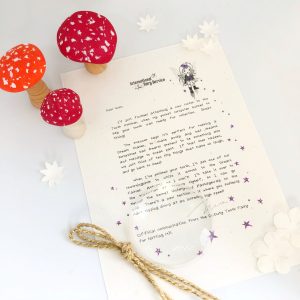
Photo: ‘Hello’ by Catherine Anne Gilmour
In society most communication is recognised through speaking to others. However, some people may have difficulty with using speech and they will need to use different ways to communicate.
Makaton is a language development programme using signs and symbols to help people communicate. Today over 100,000 children and adults use Makaton. Most people start using Makaton as children then naturally stop using the signs and symbols as they no longer need them. However, some people will need to use Makaton for their whole lives. There is no right or wrong age to introduce Makaton, it may be some people’s main method of communication for the rest of their lives.
Research has shown that signs and gestures are easier to learn than spoken words. Babies use gestures before they can speak to tell us what they want. For example, they might point at the biscuit tin or hold out their arms to be lifted up. By using signing it is shown through research to help promote verbal stimulation. The hand movement part of the brain is very close to our vocalisation part and is shown to help develop verbal communication. We always speak when we are using Makaton to help with the development of vocalizing.
When we speak, we often use extra tools to help the person we are communicating with understand what we are saying. For example, if we are asked for directions, we might point (gesture) or draw a picture. These are clues to help provide more information.
Makaton uses speech with signs (gestures) and symbols (pictures) to help people communicate.
• Signs can help people who have no speech or whose speech is unclear. They are simple actions and handshapes to convey a meaning.
• Symbols can help people who have limited speech and those who cannot, or prefer not to sign. These are particularly motivating for autistic people, are permanent and represent the object.
Makaton is extremely flexible as it can be personalised to an individual’s needs and used at a level suitable for them. It can be used to:
• share thoughts, choices and emotions
• label real objects, pictures, photos and places
• take part in games and songs
• listen to, read and tell stories
• create recipes, menus and shopping lists
• write letters and messages
• help people find their way around public buildings
It is important to remember that everyone who interacts with someone who uses Makaton to communicates learns it too, for example, parents and other family members, friends and carers, education and health professionals should be using Makaton.
Makaton is regularly used in mainstream schools, to support all children to develop communication, language and literacy skills. It also supports integration, as children with and without language difficulties can communicate with each other, learn and play together more easily.
How do I learn Makaton?
The best way to learn Makaton is to attend a workshop. It means that you learn with other people, share your experiences, receive feedback on your signing and symbol work and enables you to practice with others. It also gives you the opportunity to meet and build a relationship with a Makaton Tutor, who can help and support you in the future.
See the Makaton website HERE to find out where the course nearest to you is. Also on their website you will find free downloadable resources which are updated every month for you to learn some new signs and symbols to start using before you are able to attend a workshop.
Becky Lyddon is the founder of Sensory Spectacle, which educates about sensory processing difficulties and she’s also a regional Makaton tutor. She’s worked in the field of supporting children, families, adults and professionals in SEN since 2009. You can find Becky on Facebook, Instagram and Twitter.
You may also enjoy:
Sensory Processing Disorder & Our Boy With Down’s Syndrome
Whether To Delay Starting School For A Year Or Not
Our Boy With Down’s Syndrome Starts School
Our Boy With Down’s Syndrome & Mainstream School
Visual Processing and the Power Of The Puzzle
⭐️Beautiful Letters From Magical Places⭐️
If you would like to subscribe to our Elf Club, and receive our newsletters, special offers, free Guides and discount codes, I’d love to see you there!

To receive our Magical Newsletter
PLUS
Two FREE Guides in the newsletter:
Family Advent Activities & Ways to Make Christmas Eve More Magical!
[one_half]

[/one_half]
[one_half]

[/one_half]
The International Elf Service specialises in beautiful handcrafted, personalised letters from magical places … the North Pole and Fairyland. Designed to encourage children to read, while developing and preserving their love of all things magical.
‘Very Helpful’ Fairy & Tooth Fairy Letters
Try our amazingly unique and magical Family Christmas Tradition of Christmas Letter Bundles from the North Pole. Elf letters filled with secrets and snippets from the North Pole, for you to deliver very mysteriously on the Elves behalf … for your children to find.
Elfie’s Christmas Letters – Video is the Christmas 2019 Edition
***
*You don’t need an Elf or a Fairy Door to enjoy these letters. Pop magical letter by their toothbrush, in their shoes, stashed away with the rest of the mail – have fun!
Not sure? You can try these one-off letters that can be delivered any time of the year. Here and here!
A sneaky listen to our Advent Calendar Christmas letter bundle from Christmas 2018 … *The Christmas Letter Bundles Are Brand New Each Year!

Hide them among the bills and junk mail, lay them on the table first thing in the morning, stashed among the toys, or snuggled up in their bed. You choose where your children find the letters, to create a magical family tradition the kids will love!
“The best Christmas idea ever.” – Charlie Condou (Actor)
***
“These were the best things I have ever (and I mean ever) ordered!!
I’ve never seen the magic or happiness last so long x”
– Jolene (August 2017)

Come and join us on Facebook, or find us over on Christmas Traditions & Magic For Children for all year round festive chat.
Emily x











Leave a Reply